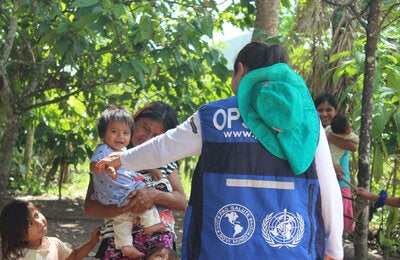The Pan American Conference on Obesity met from 8 to 11 June 2011 in Aruba and concluded with a commitment to fight obesity, especially in children, and to support public policies and effective comprehensive strategies at the different levels to address this problem.

At the conference, organized by the Ministry of Health and Sports of Aruba with the support of the Pan American Health Organization/World Health Organization (PAHO/WHO), a white paper containing a series of strategies and actions for tackling the issue of obesity in the Americas with concrete action was presented and approved.
The conclusions of this conference and all the working documents will serve as input for the High-level Meeting on Noncommunicable Diseases, scheduled for this September in the United Nations General Assembly in New York. This summit will focus on the social and economic impact of NCDs and their risk factors, as well as the challenges to development that these diseases pose in the countries, particularly in developing countries
Worldwide obesity has doubled since 1980. In 2010, the number of overweight or obese children was estimated at around 43 million, with some 92 million at risk of becoming overweight. Latin America and the Caribbean report that nearly 3.6 million children under 5 are overweight.
Dr. Mirta Roses, Director of PAHO/WHO, sent a message to the conference stating that "the actions carried out so far to prevent and control obesity have not been entirely successful, as… seen in the sharp increase in the incidence and prevalence of obesity."
The majority of interventions have been curative actions and secondary and tertiary preventions, focused on the early or late stage of the disease, respectively, and unfortunately, with relatively low coverage," noted Dr. Roses.
She stated that the Pan American Conference on Obesity was focusing precisely on primary prevention across the life course for the general population, which is key to preventing the emergence and establishment of the socioeconomic and cultural patterns of living that contribute to an elevated risk of disease. However, this effort should also address the needs of vulnerable populations, stressed Dr. Roses, since they are more at risk and are those in which inequities must be reduced.



